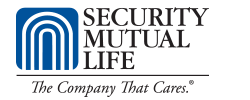Coronavirus Stimulus Package – Modifications to the Paycheck Protection Program
On June 5, 2020, President Trump signed into law the Paycheck Protection Program Flexibility Act of 2020 (the “Act”) which modified several of the provisions originally enacted in the Coronavirus Aid, Relief and Economic Security (“CARES”) Act. The CARES Act established the Paycheck Protection Program (“PPP”) to help small businesses weather the adverse financial consequences of the recent pandemic through loans that are potentially forgivable. These new provisions will provide much greater flexibility to the PPP loan program. To learn more about the PPP loans, read our previous posts here. The Act addresses the provisions that faced the most criticism from businesses. In particular:
- The original legislation required 75 percent of the loan money to go toward payroll expenses. That has been reduced to 60 percent by the Act, recognizing that businesses still had many other operating expenses, including rent, beyond payroll.
- The original legislation also required use of the loan proceeds within eight weeks of receiving the loan. That has now been extended to the earlier of 24 weeks of receiving the loan or December 31, 2020. Note that the deadline to apply for PPP loans remains at June 30, 2020.
- If businesses want to qualify to have their loans forgiven, they originally had until June 30, 2020, to restore employee levels to what existed on February 15, 2020, by rehiring workers. That deadline has been extended to December 31, 2020. There are a couple of exceptions for businesses that can’t find qualified employees for unfilled positions or when the business cannot restore its operations to comparable business levels due to social distancing, sanitation requirements or customer safety needs.
- Loans that were not forgiven were required to be repaid within two years under the CARES Act. That period has been extended to five years.
- Under the CARES Act, businesses not participating in PPP are allowed to defer payment of payroll taxes. This Act extends that to PPP borrowers and allows borrowers to defer 50 percent of the employer’s share of payroll taxes until 2021, and the remaining 50 percent until 2022.
In summary, if a borrower spends all of the loan proceeds on payroll costs and other eligible expenses during the extended 24-week period from receipt of the loan, and its full-time employee count and certain salaries (or wages) on December 31, 2020, equals or exceeds those amounts as of February 15, 2020, the borrower’s entire loan amounts will be forgiven. Additional guidance is expected from the U.S. Treasury Department and the U.S. Small Business Administration (“SBA”).
As we stated in a previous post, extra care and attention should be made to the loan forgiveness application because of the complexity of the law and the potential for civil and criminal penalties with respect to applying for and receiving a PPP loan that was not “necessary” as defined in Treasury and SBA guidelines. Consult with your own attorney and tax advisor when completing the loan forgiveness application.
